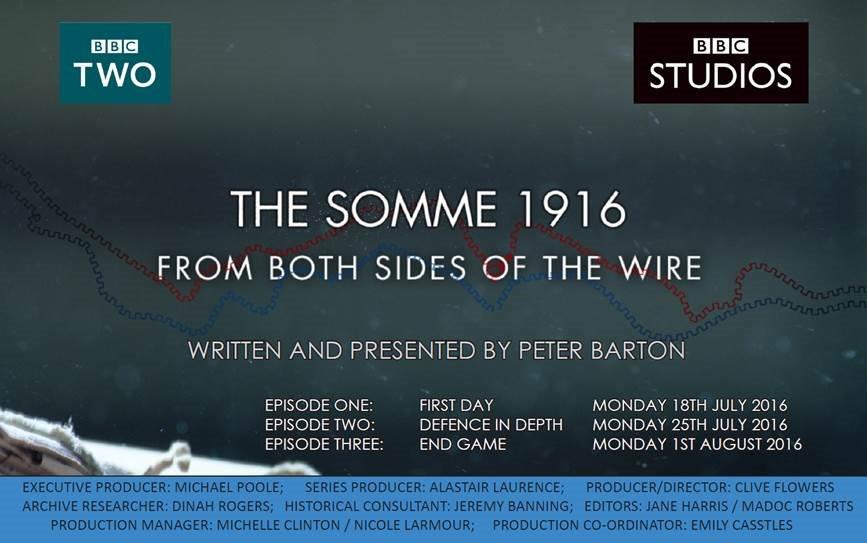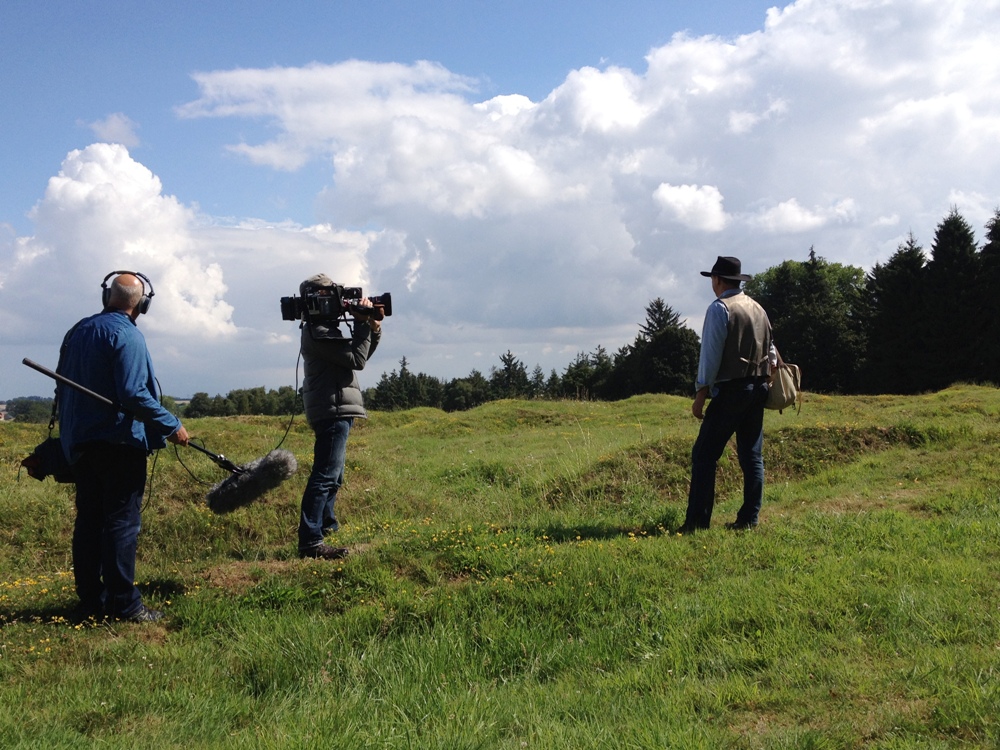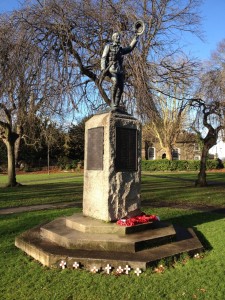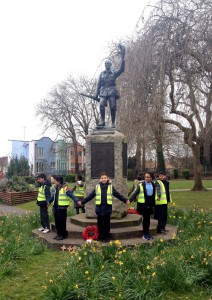Archive for 2016
Researching the war service of Ioan Gruffud’s Great Great Uncle, Rhys Griffiths, for BBC Wales ‘Coming Home’
Back in May I spent an afternoon filming with Yellow Duck Productions for their hit BBC Wales genealogy series, ‘Coming Home’. The programme, which was shown on at 9pm on BBC One Wales on Wednesday 21 December was an hour-long special, looking at the family history of Hollywood actor Ioan Gruffud. Whilst it unlocked stories of Ioan’s royal connections it was his Great Great Uncle Rees (known as Rhys) Griffiths’ service in the Great War which I had been asked to research and explain.
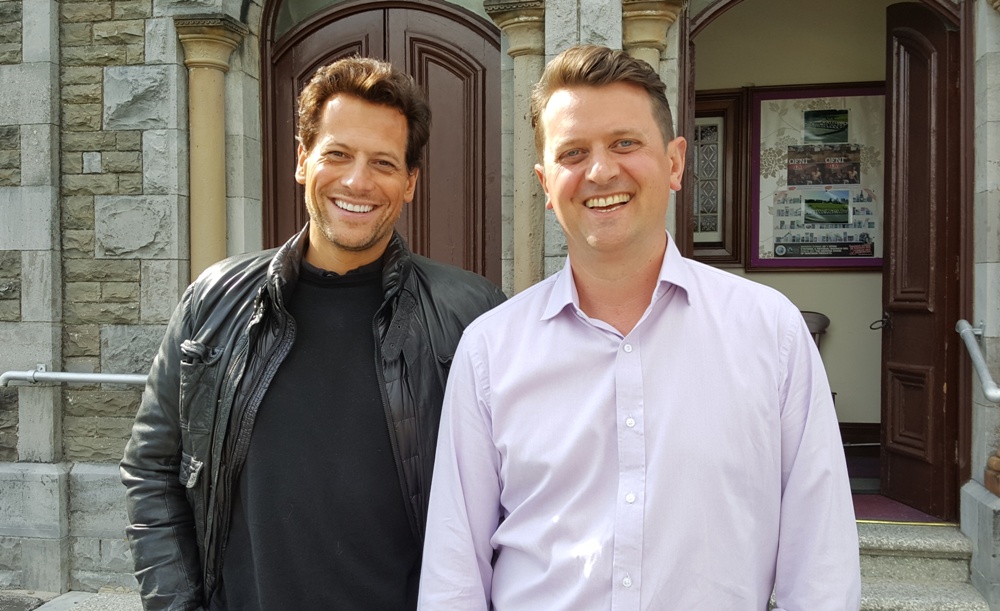
Ioan Gruffud & I outside the church in Pontyberem
Rhys was the son of David and Anne Griffiths, of Meilog, Pontyberem. A keen churchgoer, at the outbreak of war he was studying to enter the ministry. He enlisted at Carmarthen in the Royal Army Medical Corps (RAMC) and was posted to 106 Field Ambulance, part of the 35th Division (made up of ‘Bantams’ who were all under the normal regulation minimum height of 5’ 3”). With his unit, he moved to France early in 1916, occupying positions in the trenches in French Flanders and Artois. Sadly, there is no surviving service record for Rhys and so his day-to-day movements can only be pieced together from his unit war diary.
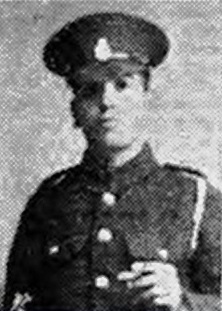
63926 Pte Rhys Griffiths, 106 Field Ambulance RAMC
The war diary for 106 Field Ambulance is often short and functional, describing the routine of the subsequent months with little elaboration but noting issues involving latrines, dung heaps, a lack of coal for hot baths and too few disinfectors to help prevent scabies and lice. At the end of May 1916 this period of relative calm ended abruptly.
On the night of 30 May 106 Field Ambulance are serving in the Rue du Bois sector between the villages of Neuve Chapelle and Festubert. At this time these villages, both heavily fought over in 1915, were considered a relatively ‘quiet’ sector.
At 7.20pm that night a heavy German bombardment falls on the frontline trenches around the salient around S10.5, destroying 250 yards of breastwork trenches. Further artillery fire falls on support positions, ‘bracketing’ the area and preventing British reinforcements getting through. Under this bombardment the infantry holding this sector, W Company of 15th Sherwood Foresters, suffer heavy casualties and it is reported three officers are wounded. One of these, Captain Ralph Ainsworth is wounded twice.
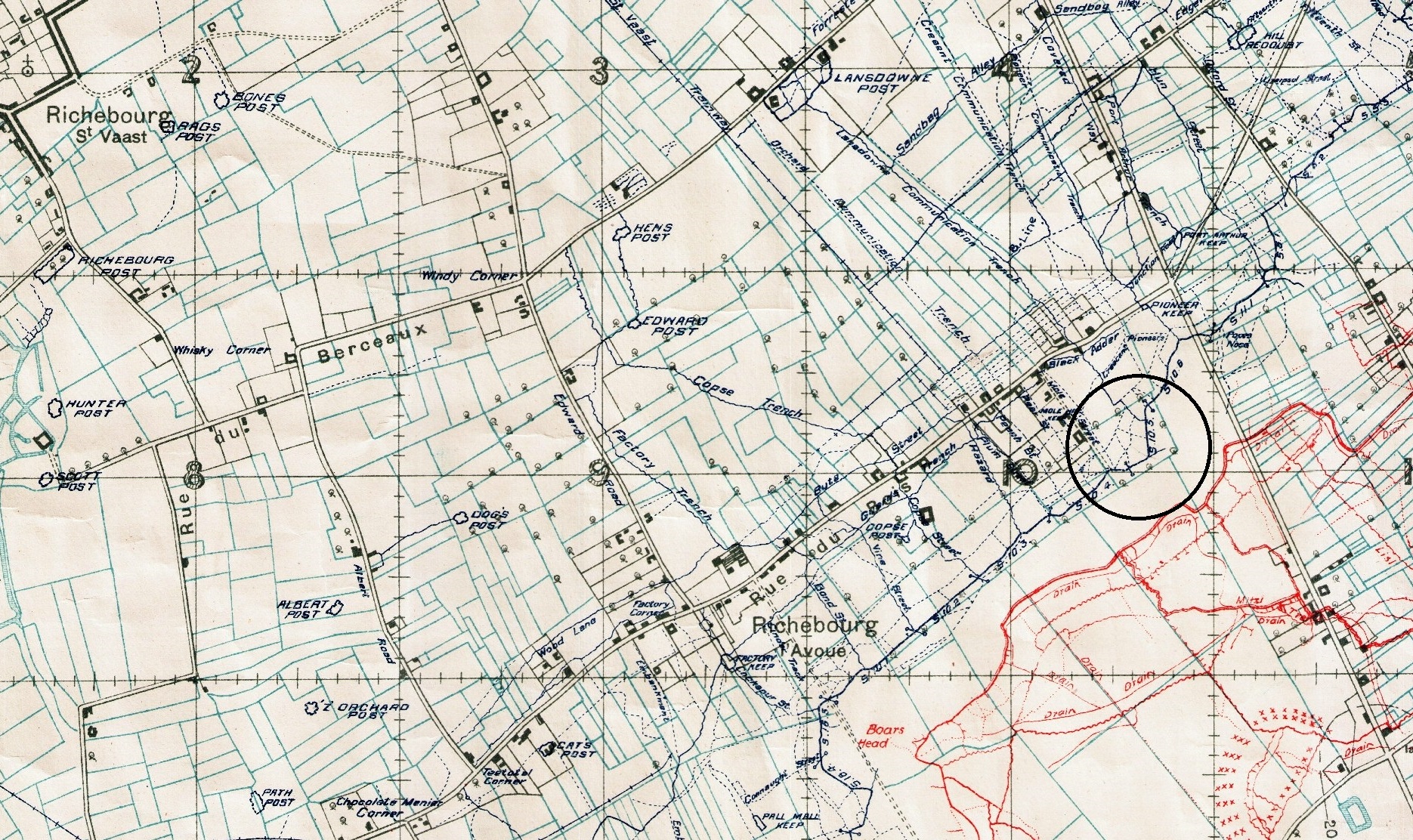
Trench map with S10.5 circled
The barrage is a precursor to a highly successful raid by the enemy. By 8.40pm, with positions destroyed and most of the Sherwood Foresters wounded, German troops attack, penetrating the right flank of the position and taking a number of men prisoner. By 10.10pm men of the 14th Gloucesters and 18th Lancashire Fusiliers had re-established British control of the salient.
By then, Rhys had been killed. The exact circumstances surrounding his death are provided by a letter written by Frank Fairfax, the Chaplain of the Field Ambulance, to Rhys’ father which was later published in The Carmarthen Journal and South Wales Weekly Advertiser of 8 September 1916:
Dear Mr Griffiths, I have to break the sad news to you of the death of your son, Rhys, on the night of 30 May. In the bombardment of the trenches there were many wounded, and he and his friend, Dugdale, were together giving first-aid and carrying the wounded back to safety. As I understood it was while Rhys and Dugdale were attending the wounded officer that a shell burst which killed Rhys, but left Dugdale unharmed except for a severe shock. When he is well enough he will be writing to tell you about it. But there is no doubt order tramadol online 180 that Rhys showed great bravery, and thought not of himself in his noble devotion to duty. I knew him and loved him. He was known to be a splendid comrade and a true Christian. Often he would sing to us his Welsh songs and hymns.
The German raid was very well planned and executed. Raids such as this were a common enough event, even in ‘quiet’ sectors. Their usual aims were to kill the enemy, gather intelligence on defences and, if possible, capture prisoners who could be interrogated for additional information.
A report written the following day by Lt Colonel RNS Gordon, 15th Sherwood Foresters details two Officers and thirty-four Other Ranks still unaccounted for. A subsequent report provides a detailed narrative of events and lists Officers and men who showed gallantry during the raid. First on the list is Captain Ainsworth (the twice wounded officer) who the report describes as ‘although wounded twice refused to be moved and stayed with his Company until the end. He displayed remarkable coolness and apparently only gave the orders to withdraw to the flanks as a last expedient.
He further took steps to see that all documents and the logbooks were sent to Headquarters on realizing the gravity of the situation.
He is, I regret, still missing.’
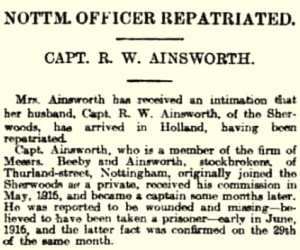
Nottingham Evening Post – Monday 22 April 1918
In fact, he stayed missing – at least to the British. Records show Captain Ainsworth was captured by the raiding party. He was held by the Germans in Officers’ Detention Camps at Crefeld and Holzminden until April 1918, when he was transferred to Holland, finally being repatriated in December of that year. Notification of his transfer to Holland reached the Nottingham press on 22 April (shown to the left). A Facebook page ‘Small Town, Great War. Hucknall 1914-1918’ gives more detail on Captain Ainsworth here.
As the chaplain’s letter describes Rhys and Dugdale attending a wounded officer when Rhys is killed, there is a good chance the officer was Ainwsworth. The letter also describes Rhys’ RAMC comrade, Private Robert Dugdale, being severely shocked. Dugdale’s pension record survives and confirms the chaplain’s description of events. He was admitted to the Field Ambulance as a casualty that night, suffering with neurasthenia. Dugdale makes a full recovery, serves through the Somme, Passchendaele and the 1918 battles, ultimately surviving the war. Having served nearly four years he was discharged in July 1919. Dugdale was awarded the Military Medal in January 1917, probably for good work during the Battle of the Somme.
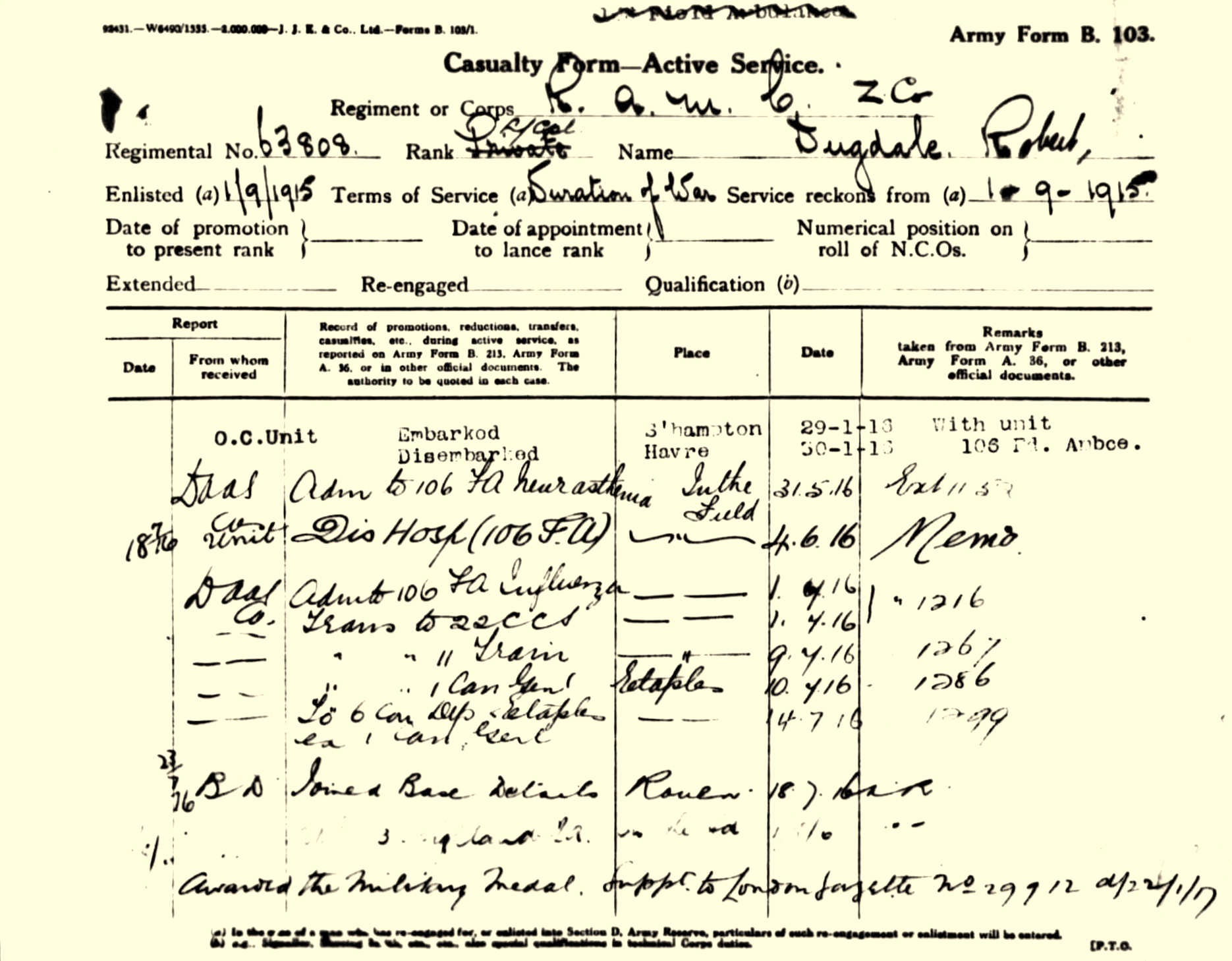
Casualty Form from Robert Dugdale’s Pension Record showing his admission to the Field Ambulance with neurasthenia
Rhys Griffiths was the first death suffered by 106 Field Ambulance since their arrival in France. The other two men known to be associated with his death, Private Robert Dugdale and Captain Ralph Ainsworth, both survived the war. Such is the way luck can play a part in surviving time in the trenches. Despite it being a tragic story, it was a satisfying experience to talk Ioan and his father Peter through Rhys’ all too brief period of time on the Western Front. Another family now aware of their link to the Great War.
Rhys is buried in St. Vaast Post Military Cemetery, Richebourg L’Avoué alongside the men of 14th Gloucesters and 15th Sherwood Foresters who also died on 30 May 1916. Remembering them all.
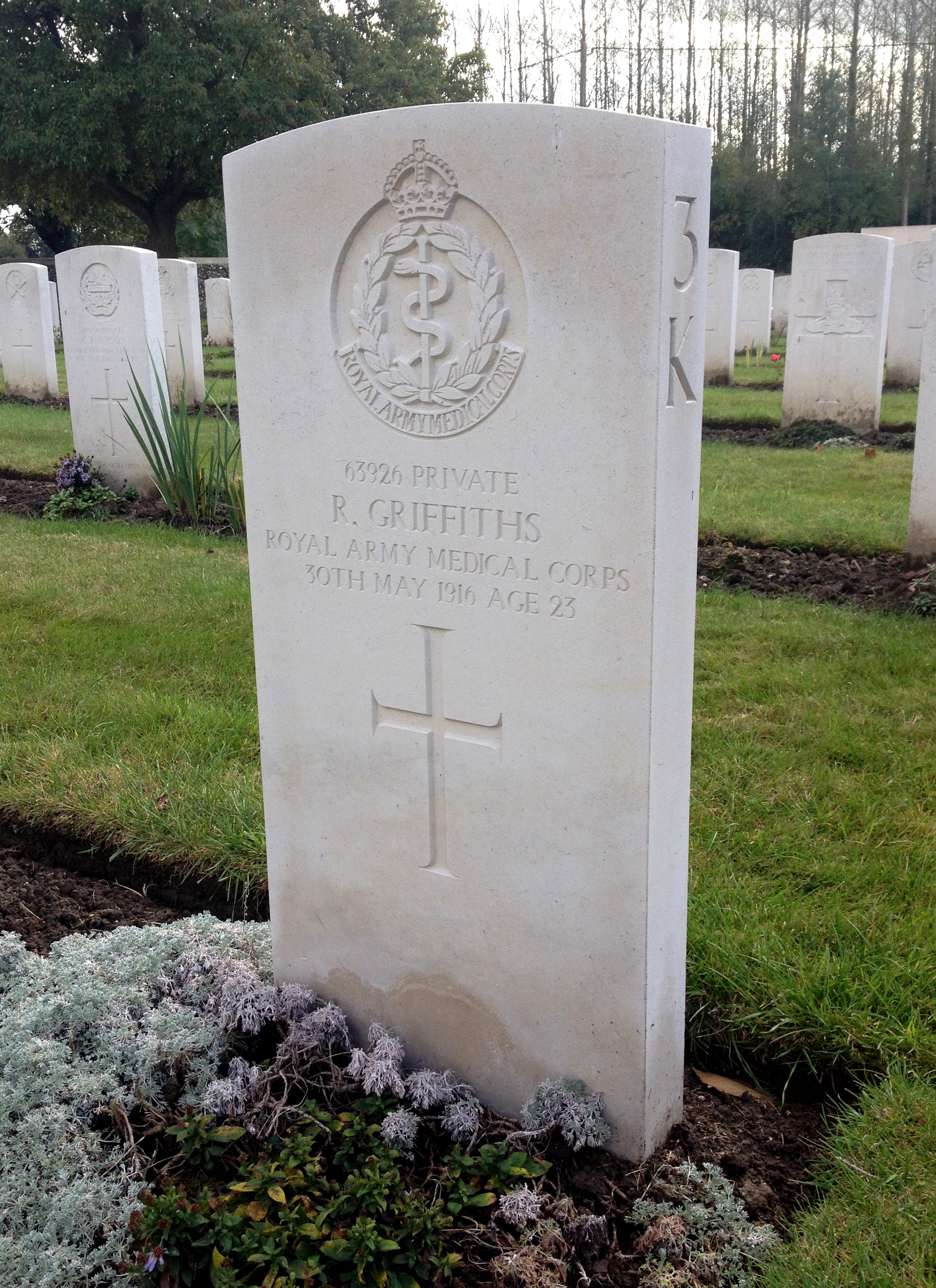
Grave of Pte Rhys Griffiths, 106 Field Ambulance RAMC at St. Vaast Post Military Cemetery, Richebourg L’Avoué
Link to BBC Wales ‘Coming Home’ page: http://www.bbc.co.uk/programmes/b086xl8v
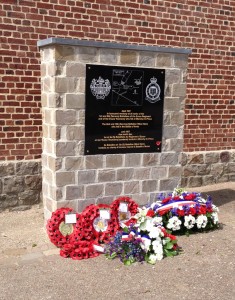
Memorial to commemorate the losses of the 1st Battalion Essex Regiment and the Essex Yeomanry at Monchy-le-Preux
Monchy-le-Preux has long been one of my favourite spots on the battlefields. The tale of its capture and subsequent defence make fascinating reading. As such, I was delighted to take my group of battlefield clients to attend the unveiling of a new memorial to the 1st Essex Regiment and Essex Yeomanry in the village square on Saturday 21 May 2016. The memorial is the brainchild of Dr Ted Bailey, whose grandfather served in the 1st Essex Regiment.
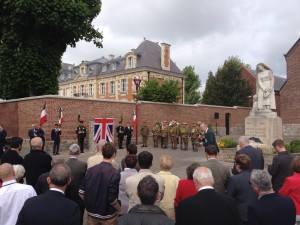
The start of the ceremony, 21 May 2016
Monchy was chosen as the site for this memorial as it is forever associated with the losses sustained by the cavalrymen of the Essex Yeomanry who aided the capture of the village on 11 April 1917. During this action, Lance Corporal Harold Mugford held back the advancing enemy singlehandedly, although seriously injured. For his actions he was awarded the Victoria Cross. Three days later the 1st Essex Regiment and Newfoundland Regiment launched an ill-fated push eastwards up Infantry Hill. The Newfoundlanders losses are commemorated with one of their five caribou in the centre of the village. Dr Ted Bailey has sought to redress this imbalance with a memorial to the memory of the Essex Regiment and Yeomanry.
The press release distributed prior to the unveiling provides additional detail on the two actions of the Essex Regiment and Yeomanry at Monchy:
On 11 April, the Essex Yeomanry, as part of a mounted division, bravely attacked Monchy in a snowstorm, galloping into the village but were met with heavy fire and lost 135 men, 29 killed in action, and most of their horses. Machine Gunner Lance-Corporal Harold Mugford doggedly defended the position under severe enemy pressure although severely wounded in both legs which were subsequently amputated. He was awarded the Victoria Cross and survived the war with distinction.
On 14 April, the 1st Battalion Essex Regiment attacked east of Monchy into a wooded area aiming for their objective, some high ground known as Infantry Hill. Initial success, with ground captured and prisoners taken, was reversed by a heavy German artillery barrage plus a simultaneous counter attack by the 3rd Bavarian Regiment, one of the enemy’s finest fighting units. The battalion suffered 661 casualties, so many that a temporary battalion had to be formed with the Newfoundland Battalion, named the ‘1st Newfoundessex’, comprising only 400 men.
Other Essex Battalions were also in the vicinity during this larger Arras engagement. The 2nd Battalion was in action on 9 April losing 78 men whilst the 9th Battalion lost 163 men.
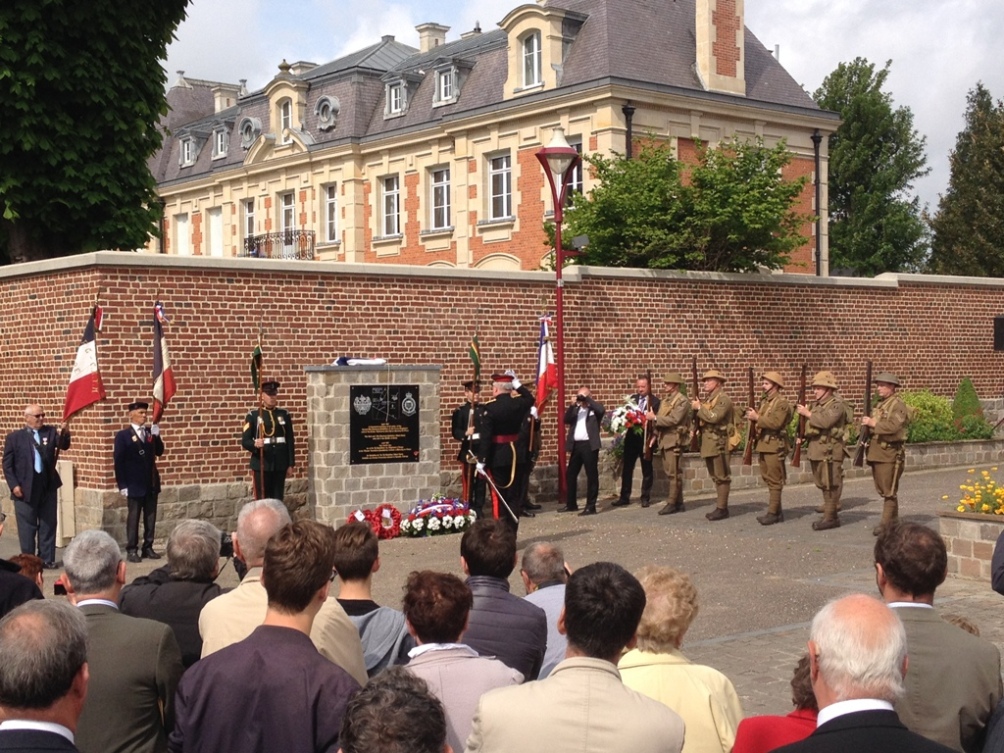
Wreath laying at the memorial
The unveiling ceremony was very well attended with a long list of dignitaries from the UK along with a great many locals. The memorial can be visited in the square outside the church just off the Rue de la Chaussy. It stands a mere 50 metres away from the Newfoundland caribou.
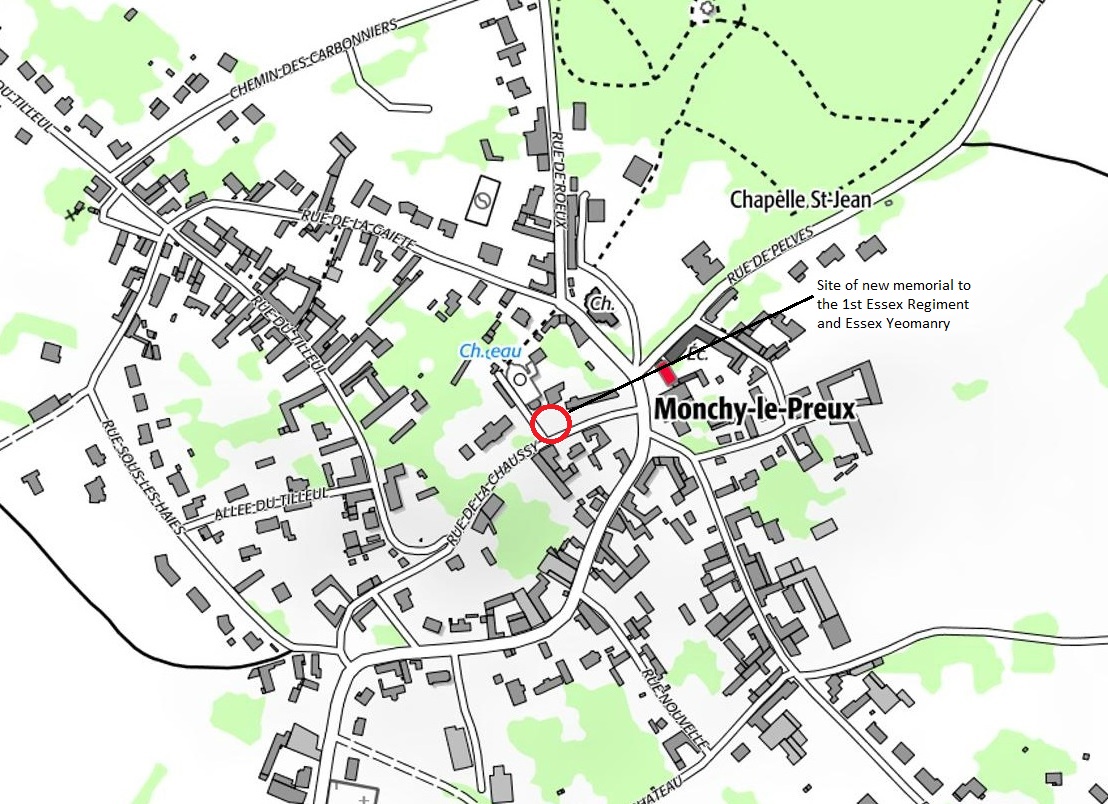
Map showing location of the new memorial to the 1st Essex Regiment and Essex Yeomanry at Monchy-le-Preux. Map courtesy of Geoportail www.geoportail.gouv.fr/
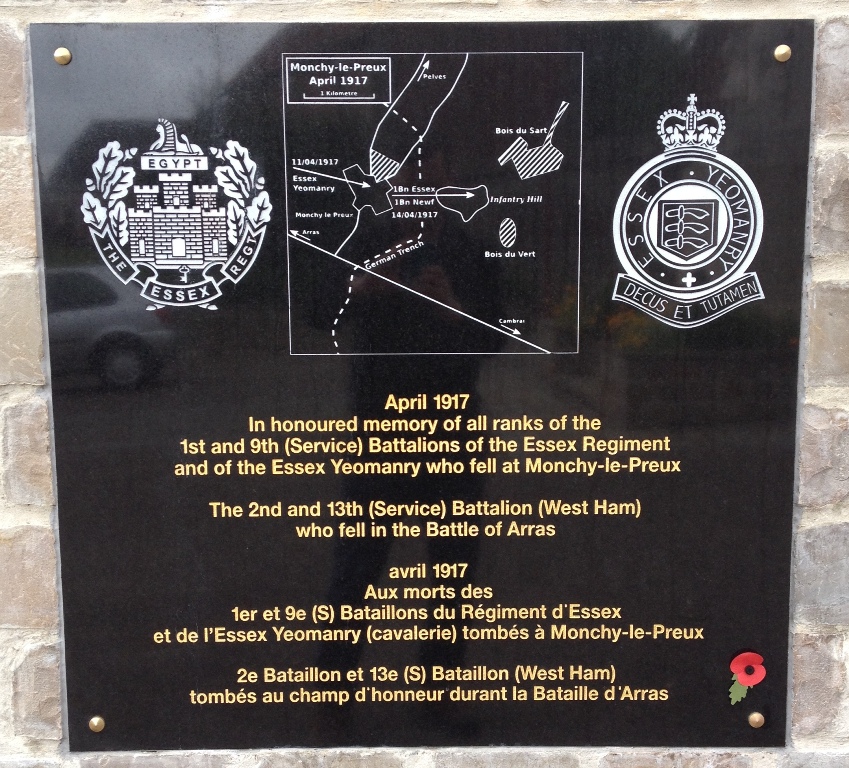
Detail on the plaque, Monchy le Preux
Through my work for Historic England I have come to know many stories of Bristol’s soldiers in the war. A few years ago I met Clive Burlton, a local historian and writer with a superb knowledge of Bristol’s role in the war. Clive and I have given talks at the same venue on a number of occasions and over a post-talk beer often discussed the possibility of running a coach tour to the battlefields for people who want to find out more about Bristol’s wartime story.
So, here we are! I am pleased to announce that, with our partners at Bakers Dolphin, we are running a special tour:
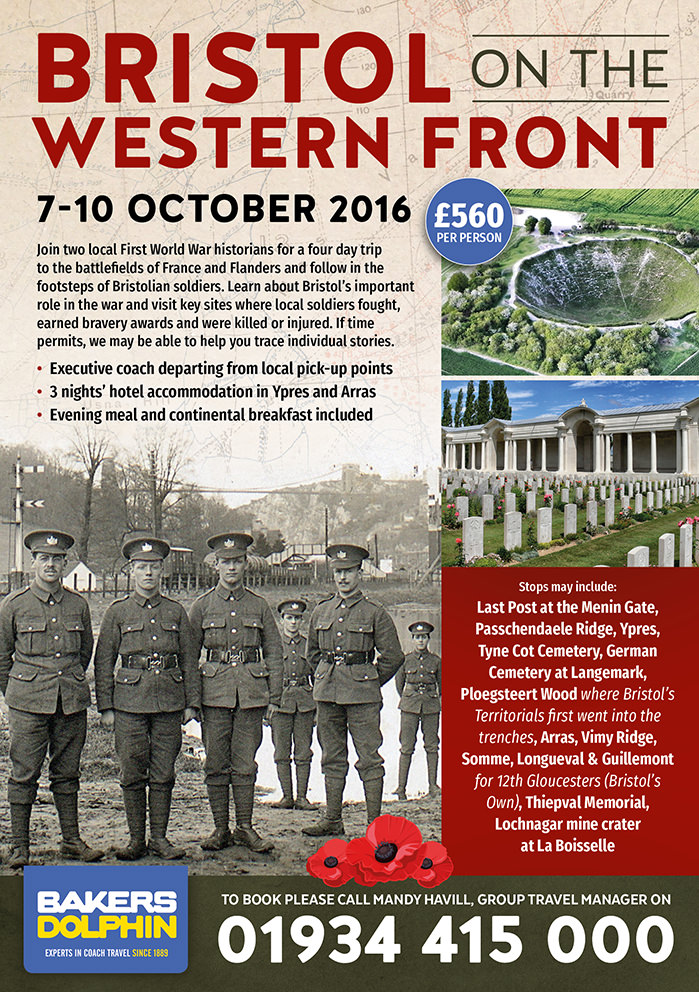
The three night, four day tour will visit key sites where soldiers from Bristol fought, earned bravery awards and lost their lives.
Travelling by executive coach we will depart from Bristol on 7 October and travel to the sacred Ypres salient, the wartime cauldron for so many of Britain’s soldiers. That evening we will attend the Last Post ceremony at the Menin Gate that night. The next day sees us visiting sites around the salient including Ploegsteert (known as Plugstreet to the Tommies) to see where Bristol’s Territorials first went into the trenches before heading south to Arras, our base for the remainder of the trip.
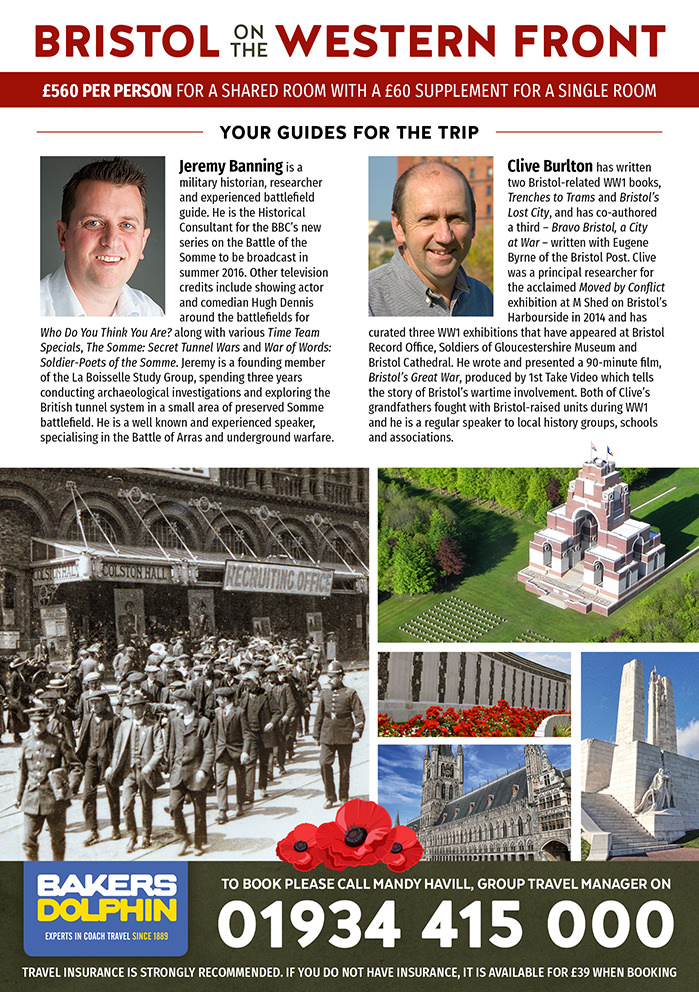
On Saturday 9th we will spend a day on the Somme battlefields, visiting key sites such as Newfoundland Memorial Park, Thiepval Memorial and the Lochnagar Mine Crater. We will also look at the story of the 12th Gloucesters (Bristol’s Own) in their actions at Longueval and Guillemont. The morning of our final day will be spent on the Arras battlefield, looking at the events surrounding the 12th Gloucesters (Bristol’s Own) action at Fresnoy on 8-9 May 1917.
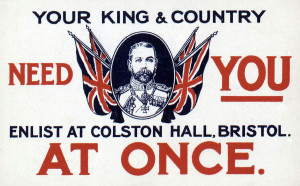
Wartime recruiting card for local soldiers to enlist at Colston Hall, Bristol
Accommodation is based at the following 3-star hotels – Novotel (Ypres) and Holiday Inn Express (Arras). Evening meal and continental breakfast are included. If there is demand then I will give a talk on the tunnellers’ war after dinner one night and Clive on a particular Bristol story the next night.
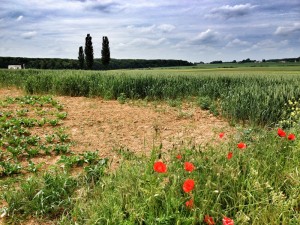
Guillemont – 12th Gloucesters (Bristol’s Own) attacked close to here on 3 September 1916
Individual visits can be accommodated if time permits and locations are close by.
The cost is a competitive £560pp, based on a shared room. For more details please contact me HERE or Mandy Havill, Group Travel Manager on 01934 415 000. I look forward to meeting you on the tour and sharing in Bristol’s fascinating history.
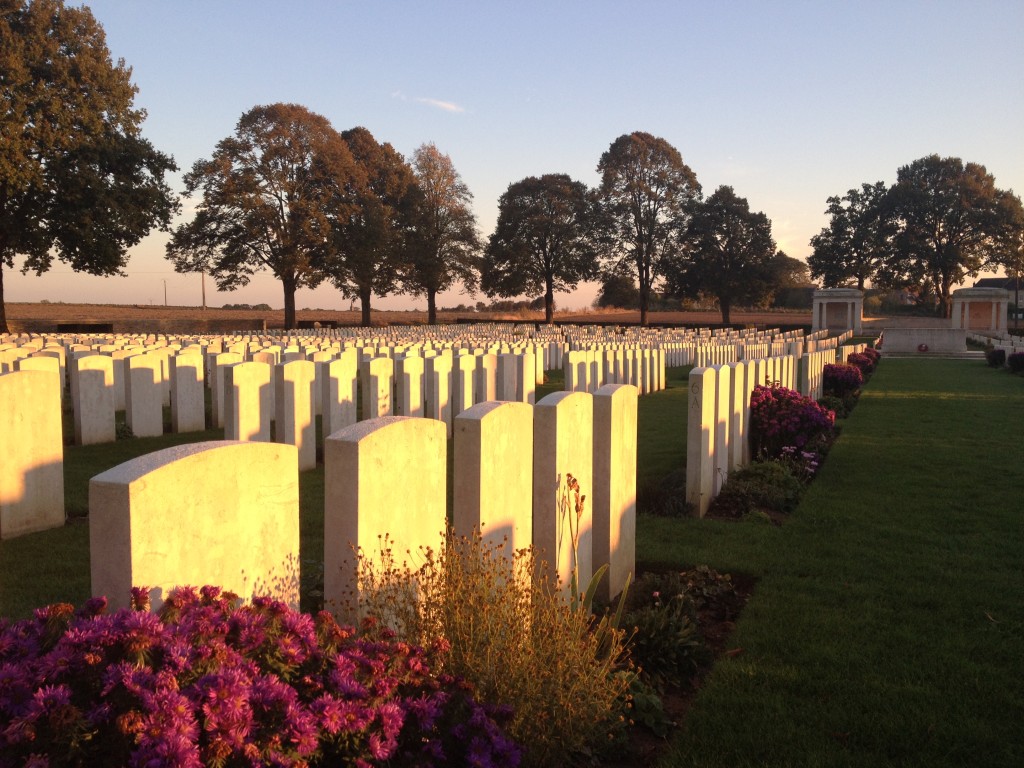
Delville Wood Cemetery, Somme

